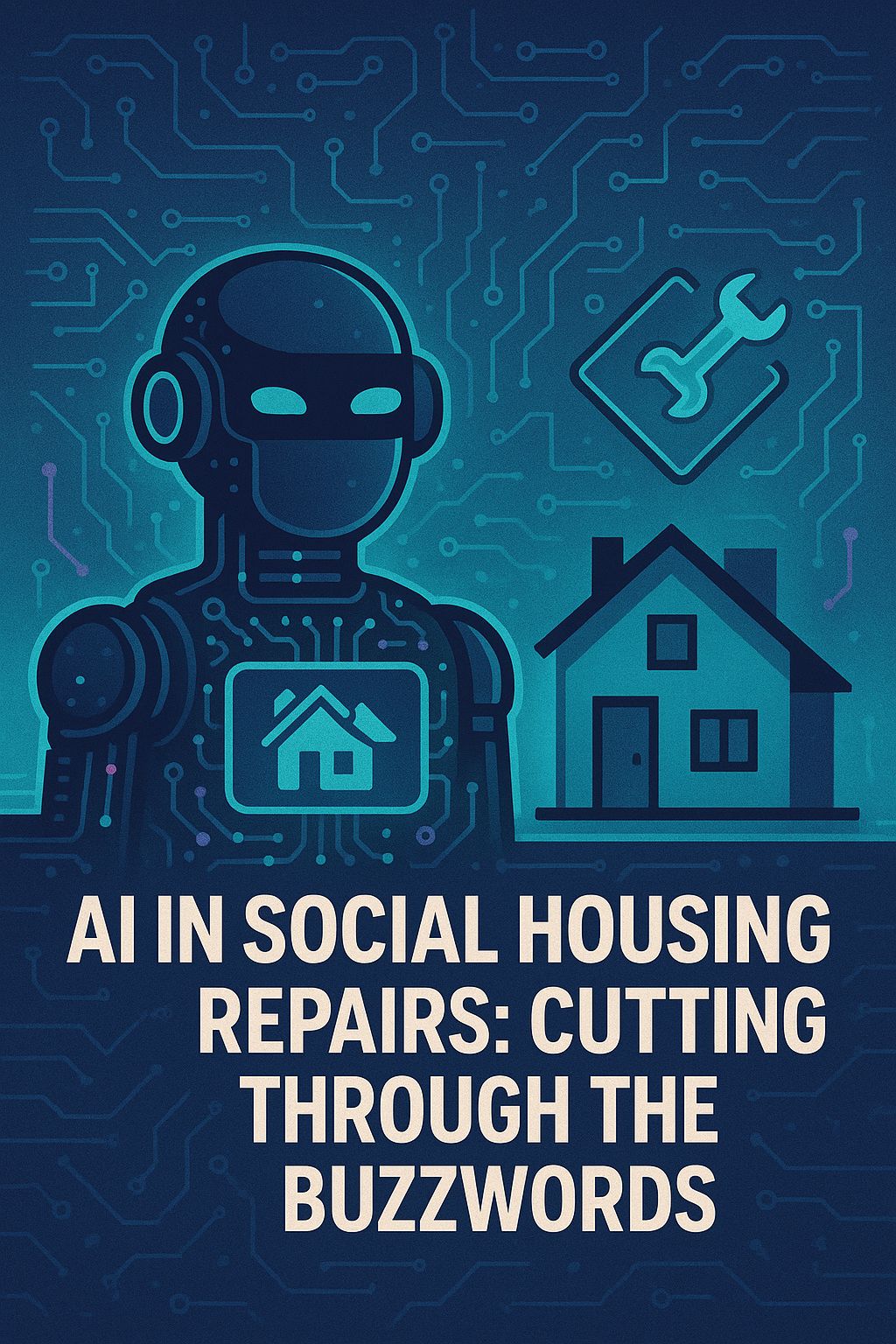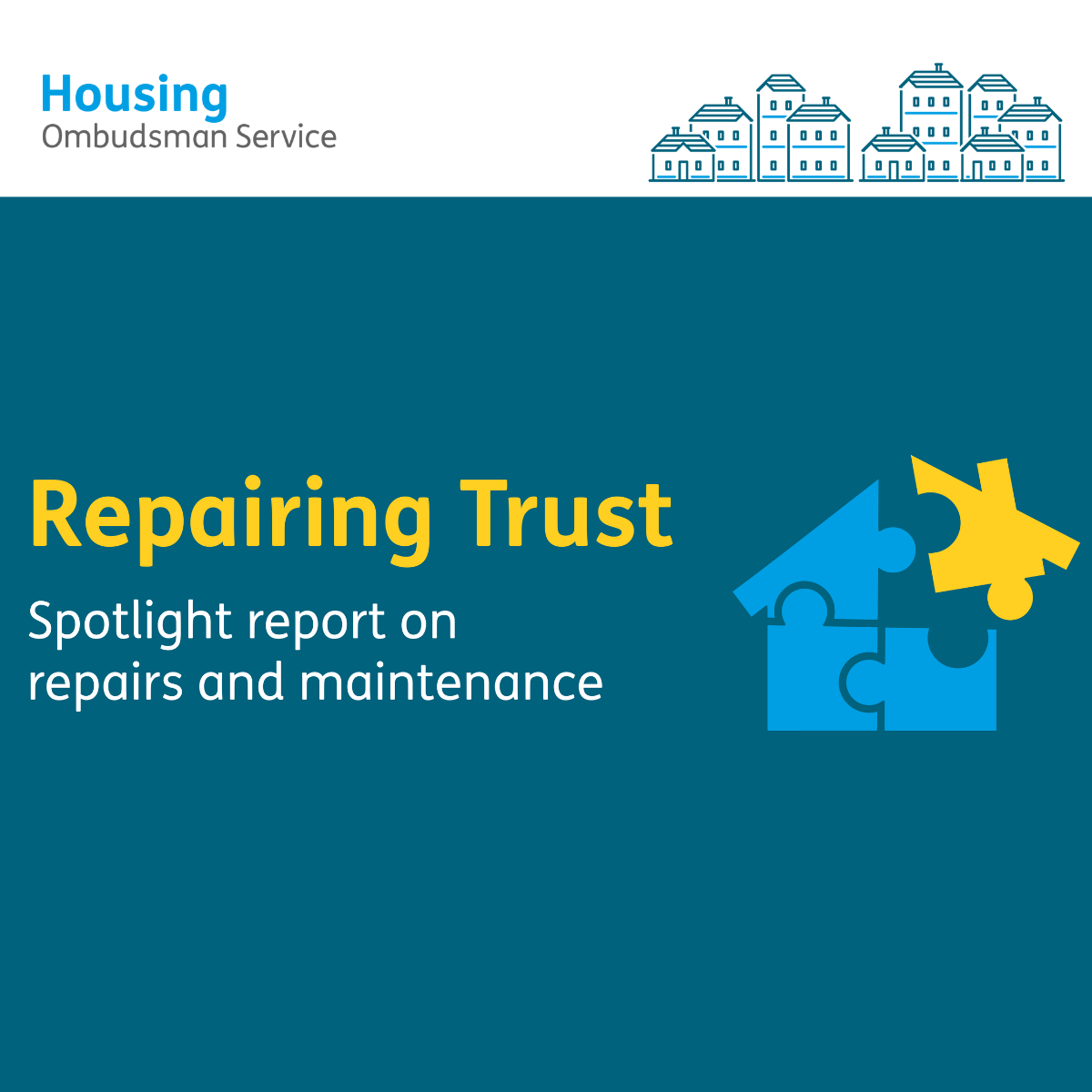- Dwelling On It
- Posts
- AI in Social Housing Repairs: Cutting Through the Buzzwords
AI in Social Housing Repairs: Cutting Through the Buzzwords
AI in Social Housing Repairs: Cutting Through the Buzzwords

Artificial intelligence is everywhere—government strategies, software pitches, LinkedIn think pieces, and Microsoft Copilot rollouts. Social housing is no exception. But in a sector where missed appointments, spreadsheet-bound asset data, and multi-call repairs are still the norm, what does AI really mean for housing repairs today?
Let’s break through the hype and look at what’s actually happening on the ground.
What AI Is (and Isn’t) Doing in Housing Repairs
Narrow Tools, Early Stages, and Automation in Disguise
Most AI tools in social housing repairs are still quite narrow in scope:
Chatbots triaging repairs: Used to classify and prioritise repairs in real time, sometimes improving first-time fix rates. However, these often require significant human moderation to avoid misclassification or escalation errors.
Image-based diagnostics: Visual AI can flag damp or mould patches from tenant photos, but accuracy depends on photo quality and environmental factors.
SOR code suggestions: Machine learning models can suggest Schedule of Rates codes from resident descriptions, saving admin time—if the underlying data is clean and consistent.
Many of these tools are in early-stage rollouts, with lots of human oversight still required. In some cases, what’s marketed as “AI” is simply advanced automation, not true machine learning.
Where AI Is Quietly Making a Difference
Despite the limitations, there are real, measurable benefits emerging:
Predictive maintenance: Platforms that analyse millions of past repairs can flag properties at risk of repeat issues or complaints, enabling proactive intervention before problems escalate.
Intelligent scheduling: AI-driven scheduling tools help optimise contractor routes and appointment times, reducing missed visits and improving tenant satisfaction.
Anomaly detection: AI can spot data inconsistencies, voids, or even potential fraud across large datasets.
These advances are helping some providers reduce avoidable repairs, improve compliance with regulations like Awaab’s Law, and deliver a more tenant-focused service.
Who’s Doing AI Well in Social Housing Repairs?
While AI in social housing repairs is still developing, several organisations are already demonstrating tangible results:
Mobysoft’s RepairSense platform stands out for its predictive maintenance capabilities. For example, Karbon Homes used RepairSense to reduce repeat repairs by thousands of cases in a single year, saving over half a million pounds. Similarly, Greatwell Homes automated damp and mould management across thousands of properties, improving compliance and reducing the risk of missed jobs.
Conversational AI assistants are being used by forward-thinking housing associations to streamline maintenance requests, provide 24/7 tenant support, and collect data for predictive maintenance—enhancing both efficiency and tenant satisfaction.
Across the sector, AI chatbots, intelligent scheduling, and IoT sensors are increasingly common, with a growing number of providers integrating these tools to improve first-time fix rates, reduce voids, and proactively manage repairs.
These examples show that, when implemented thoughtfully and supported by clean data, AI can deliver measurable improvements in both service quality and operational efficiency for social housing providers.
The Critical Foundation: Data Quality
AI Is Only as Good as Your Data
All the promise of AI falls flat if your data is unreliable, incomplete, or siloed:
Inconsistent repair categorisation, missing job data, or fragmented systems undermine AI’s ability to provide accurate insights or recommendations.
Providers must invest in structured, clean, and consistent data—from repairs history to asset hierarchies—before AI can deliver real value.
Without this groundwork, AI may simply replicate existing issues at greater speed and scale.
Risks and Red Flags
Don’t Believe the Hype—And Watch for Pitfalls
Overpromising vendors: Some suppliers are rebranding basic automation as “AI,” raising expectations that can’t be met.
Widening digital gaps: New tools can exclude frontline staff or residents if not rolled out with proper training and accessibility in mind.
Low clarity: If an AI-driven chatbot misdiagnoses a critical repair, accountability becomes murky—was it the algorithm or the landlord?
Bias and fairness: AI systems can inadvertently encode or amplify existing societal biases, especially in resource allocation or prioritisation.
Overreliance on technology: Relying solely on AI without human oversight can embed poor service or miss critical issues.
What Should Landlords Do Now?
Start Small, Measure Impact
Test AI tools in low-risk areas (like internal triage) and track actual time saved or accuracy gains.
Get Your Data Foundations Right
Prioritise data quality, consistency, and governance before rolling out AI at scale.
Keep Humans in the Loop
Especially for decisions affecting health, safety, or complaint escalation—AI should assist, not replace, professional judgement.
Focus on Real Problems
Don’t adopt AI because it’s fashionable. Implement it where it solves genuine workflow or service issues.
As we push into an era of stricter regulation, tighter budgets, and smarter tenants — housing providers can’t afford to sleepwalk through the asset data challenge.
It’s time to stop tolerating inconsistency as “just how it is” and start doing the hard, collaborative work of building data we actually believe in.
The Bottom Line
AI is not a silver bullet for social housing repairs. But, when grounded in clean data and deployed thoughtfully, it can help providers move from reactive firefighting to proactive, tenant-focused service—reducing avoidable repairs, improving compliance, and enhancing satisfaction.
The sector’s next challenge? Ensuring that the technology serves people—not the other way around.
“Would your repairs data even support AI—or would it just replicate the same issues, faster?”
The answer depends on the foundations you lay today.
📚 Articles to Dwell On
What’s one housing system or service that desperately needs a rethink — but no one’s addressing?
Hit reply with your take — we’ll share the best insights in a future issue.
Enjoyed this edition? Forward it to a colleague or subscribe here:
👉 https://newsletter.dwellingonit.com/subscribe
Follow us on LinkedIn → https://www.linkedin.com/company/dwelling-on-it


